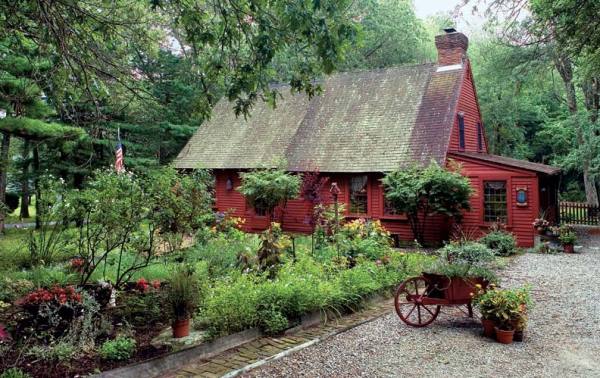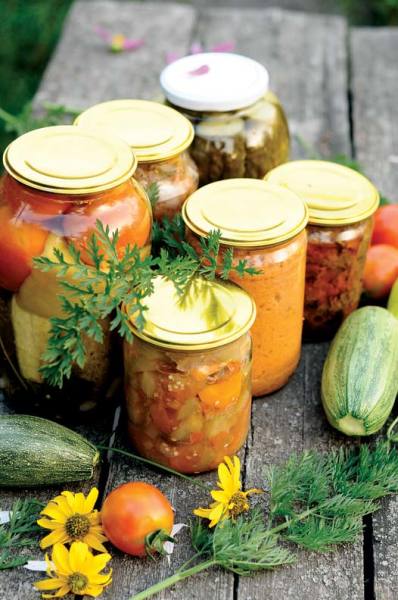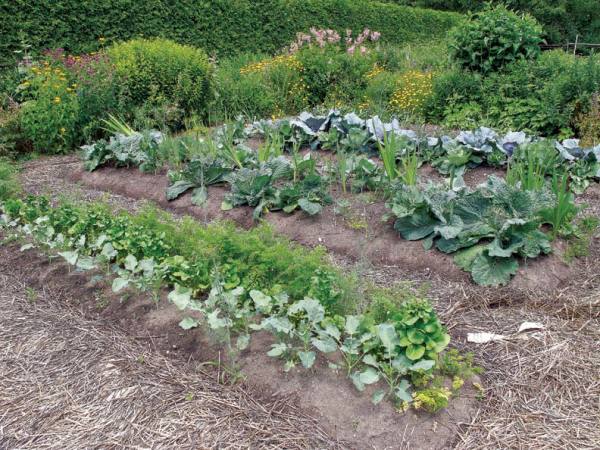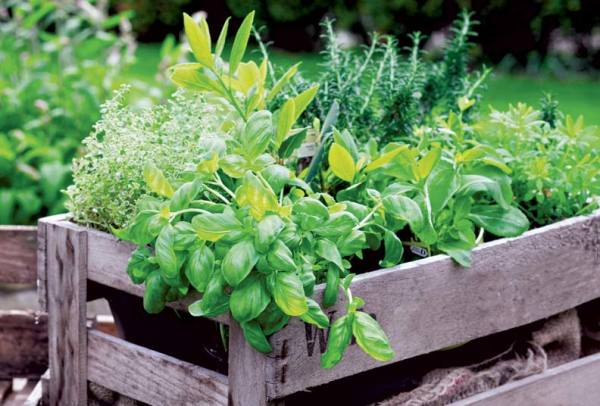
This historical Rhode Island house has a lush garden right outside its doors. (Photo: Eric Roth)
Having grown up in a horticulturally minded family, I never thought much about kitchen gardening—it was simply expected. My own parents had been growing their own food since before World War II, when backyard victory gardens, planted to help the war effort, supplied more than 40 percent of all the domestic produce in the country. My grandparents and their parents before them also took kitchen gardening as a given: In their day, what appeared on your table was generally what you raised yourself—after all, who in their right mind would pay good money for what could so easily be produced in your own backyard? Now, though, this kind of practical thinking has largely disappeared—wiped away by decades of ever more abundant (and from an historical perspective, increasingly inexpensive) supplies of fruits and vegetables at the local market.
Today, the impetus for kitchen gardening is less about economy and more about excellence and diversity: You simply cannot buy fruit, vegetables, and flowers of the kind and quality you can grow yourself. Heavenly scented blooms, scrumptiously tender baby vegetables, and fruits so juicy they melt in your mouth are there for the harvesting: All you need is some dedication, a good back, and a small plot of sunny earth. Mother Nature will do the rest. Granted, growing food for the table isn’t always easy—there’s many a potential slip between the seed and the salad plate—but here are some tips to get you started with your best foot forward.

A good kitchen garden will yield flowers, fruit, and vegetables throughout the growing season. (Photo: Olga Volodina/Fotolia.com)
For the beginner, I would recommend a plot no bigger than 25′ x 30′, which should produce an ample sampling of produce for a family of three or four. In terms of general layout, traditionally most kitchen gardens are rectangular with long rows separated by some sort of paths, which makes for easy maintenance. These paths are formed either of dirt, mulch, or some other type of paving material. Personally, I prefer reasonably narrow beds I can reach across, separated by ample paths between the rows. My own kitchen garden is somewhat larger, 50′ x 50′ (a size divined to be manageable only after many years of experience) and divided into two sections by a brick path, but of course, exact dimensions, materials, and layout are a matter of expediency, budget, and personal taste. Generally, kitchen gardens are almost invariably fenced, which serves to define the garden aesthetically from the rest of the landscape, while at the same time keeping out all those pesky varmints who would just love to eat your fresh veggies.
Plan Wisely
And while on the subject of layout: Don’t do what I did, locating my first kitchen garden about as far away from the house as was possible. As their name implies, kitchen gardens are truly best located as close to the kitchen as is feasible. Not only is it a pain to carry the harvest a great distance, but locating the garden outside your normal day-to-day transit areas means you’ll miss one of the great pleasures of a kitchen garden: popping out your door to snip some fresh herbs, or harvest some sun-ripened tomatoes and a crisp cucumber to add to the meal that’s about to be served. Just remember that the site you choose will absolutely and without exception need to have full sun (at least eight hours a day).

If you’re just starting out, plant a small plot that you can eventually add onto as you become a more skillful gardener. (Photo: Alison Hancock/Fotolia.com)
The second factor for creating a successful kitchen garden is not to neglect the soil. Good gardening really starts with the dirt, and if you are expecting any kind of decent results, you need to make sure your soil is in shape. That means, first and foremost, you need to have your soil tested. You can buy a kit and do it yourself, or better yet, send a sample of soil to your local testing agency for a more complete analysis. (Many commercial companies, as well as local agricultural extension services, do this type of work.) The results of these tests will tell you exactly what you need to do to get your soil up to snuff, whether it’s adding more humus in the form of manure or compost, correcting a mineral deficiency, or supplying missing nutrients. With your soil in shape, you are already halfway to a good harvest.

Herbs are a great addition to the kitchen garden and will add flavor and fragrance to your dishes throughout the growing season. (Photo: Stock Creations/Fotolia.com)
Finally, be sure to grow only those things you enjoy and will use. While that sounds like simple common sense, it’s amazing how many times people grow things they never wind up eating. Obviously, it’s fun to experiment and grow new things, but once again, start small with items you’re unsure about: You can always grow more next year if you enjoy them. I remember one time I insisted on planting an entire row of an antique variety of eggplant that actually looks like a specked egg. Very intriguing. While this horticultural curiosity was all fine and dandy, in reality, I don’t even like eggplant all that much. Besides producing a bounty I couldn’t even begin to use (the chickens and geese loved the extra eggplant, I discovered), all those plants took up space that I could have used for something I did like.
And while on that subject, be sure to include both flowers and herbs in your kitchen garden plot. Not only do they contribute a lot in themselves, they go a long way in turning a rather prosaic and practical horticultural space into a garden of beauty. In my own garden, I grow the 10 or so herbs I use most in the kitchen, as well as an assortment of annuals for cutting during the spring, summer, and fall. That way, each trip to the kitchen garden supplies not only fruit and flavors for the meal, but flowers and scent for the house as well—surely a rather substantial inducement to adding a kitchen garden in your landscape this year.







